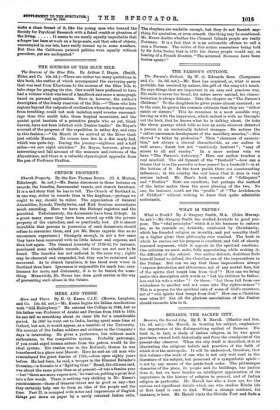THE CLYDE MYSTERY.
The Clyde Mystery : a Study in Forgeries and Folk-Lore. By Andrew Lang. (James MacLehose and Sons, Glasgow. 4s. 6d.)— This book, dealing with some excavations and " discoveries " which were made in the Firth of Clyde a few years ago, is notable mainly, though not exclusively, as supplying froth evidence of its author's versatility and capacity for piquant argumentation. Some of these discoveries have long been suspect. Dr. Robert Munro did his best in his "Archaeology and False Antiquities" to prove that the trail of the "faker" and the forger was over them all. Mr. Lang is a little more tolerant. In his own bright fashion he takes point after point in Dr. Munro's book,—especially the parallelism between the disputed objects on the Clyde and other objects found elsewhere, as in Australia. For example, " in Australia as on Clyde the stones bear some of the archaic markings common on the rock faces both in Scotland and in Central Australia ; on large rocks they are painted in Australia, in Scotland they are incised." The con- troversy raised by the Clyde discoveries bids fair to be intermin- able—like that on the mystery of Edwin Drood, in which Mr. Lang has also, of course, taken a hand—although Mr. Donnelly, the original discoverer, is dead. But no book is likely to tell the story more readably or good-natnredly than this, which closes thus :— " I am the forger's only friend, and I ask him to come forward and make a clean breast of it, like the young men who hoaxed the Society for Psychical Research with a faked wraith or phantom of
the living It seems to me nearly equally improbable that a forger has been at work on a large scale, and that sets of objects, unexampled in our isle, have really turned up in some numbers. But then the Caithness painted pebbles were equally without precedent, yet are undisputed."



























































 Previous page
Previous page